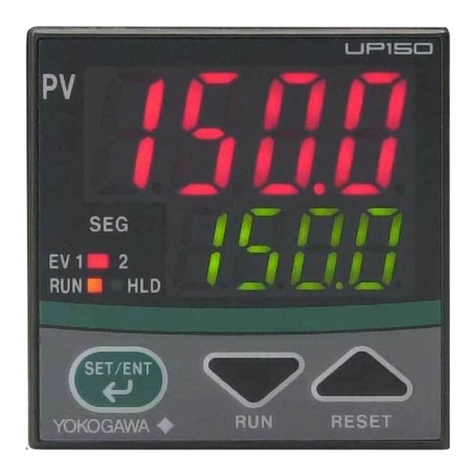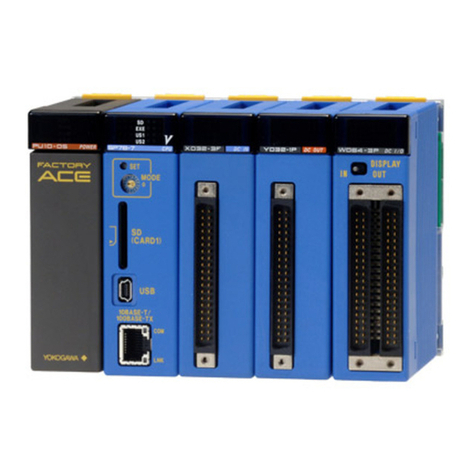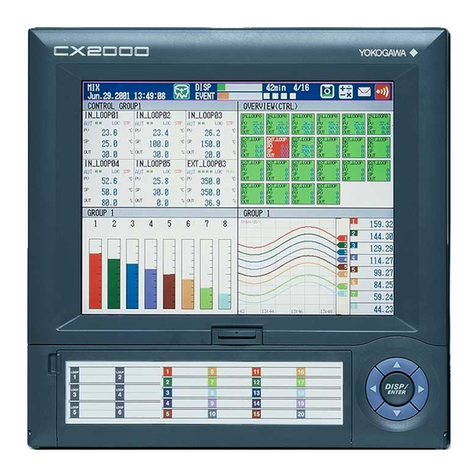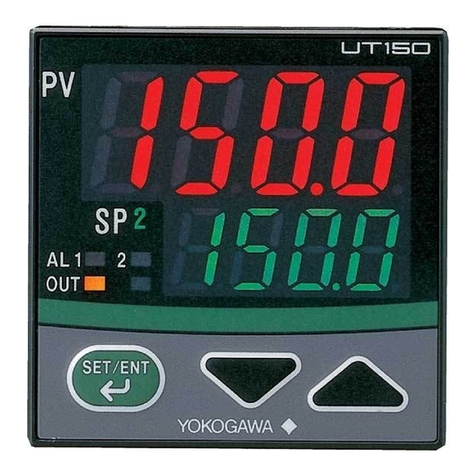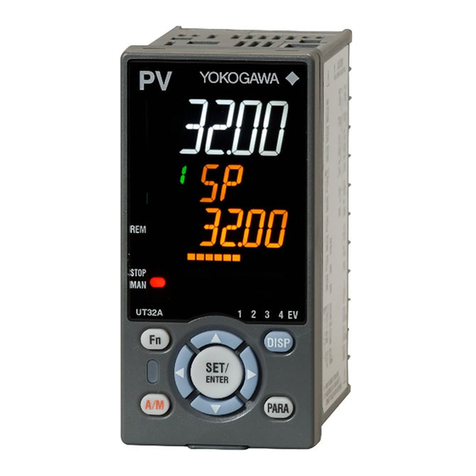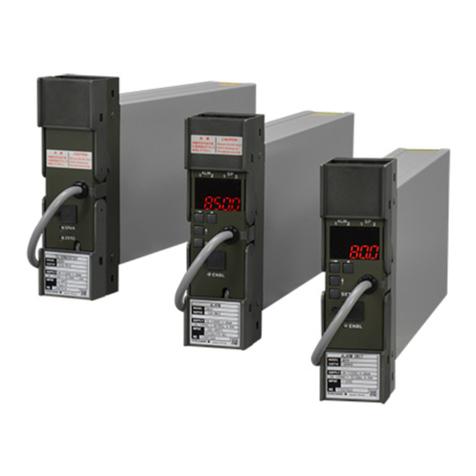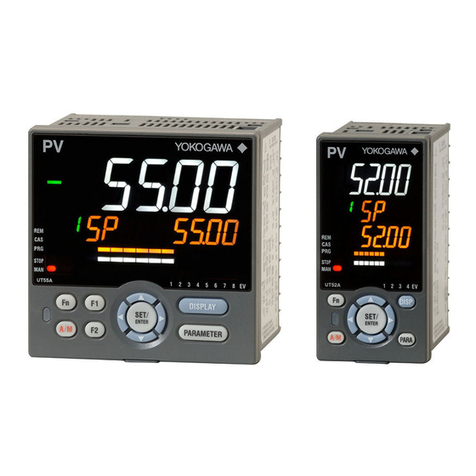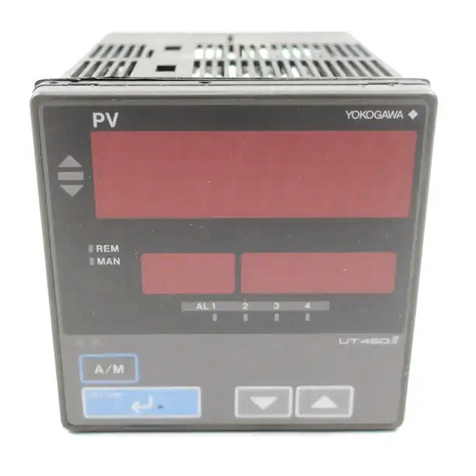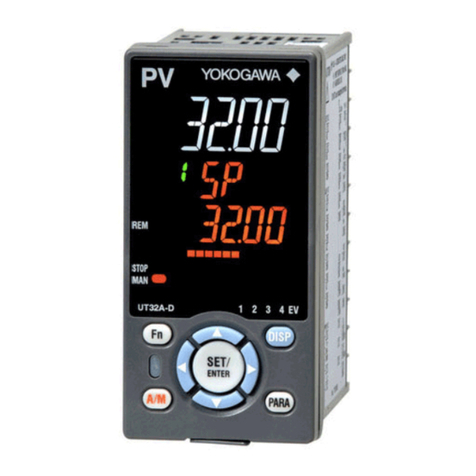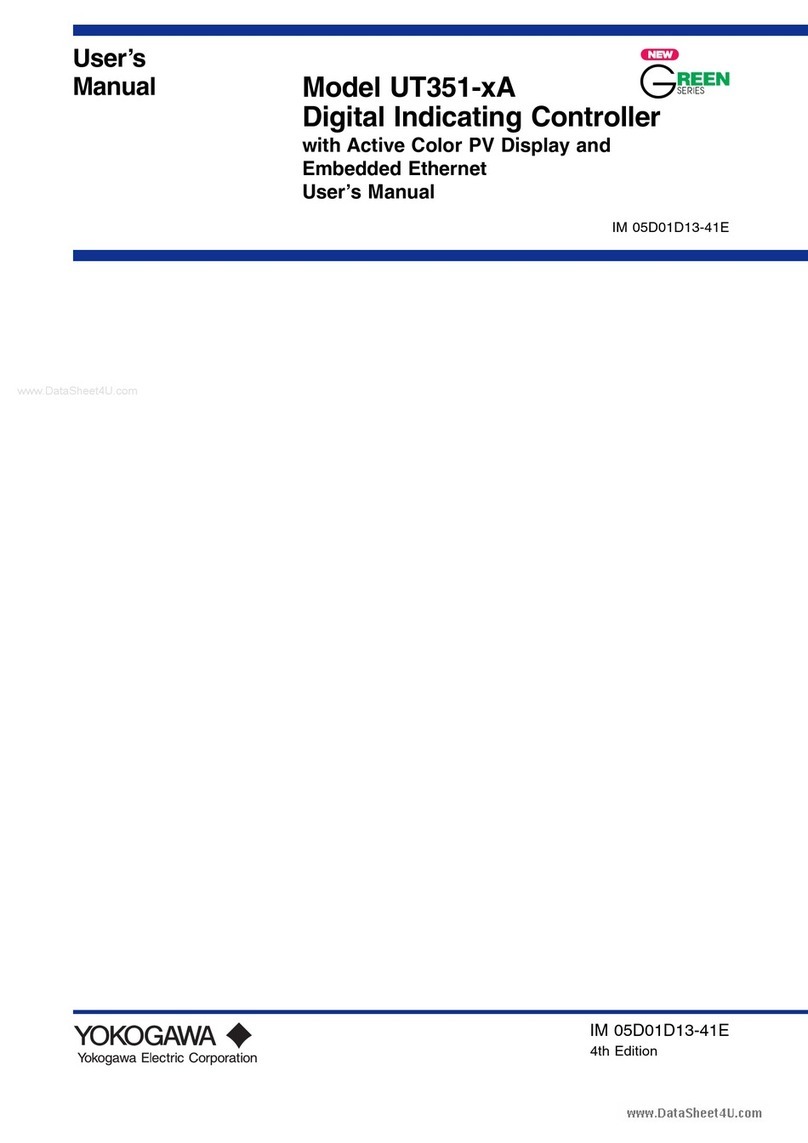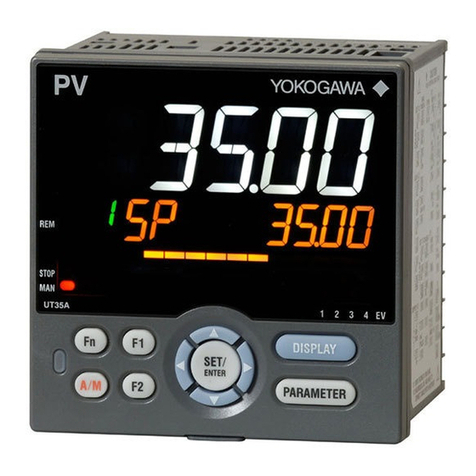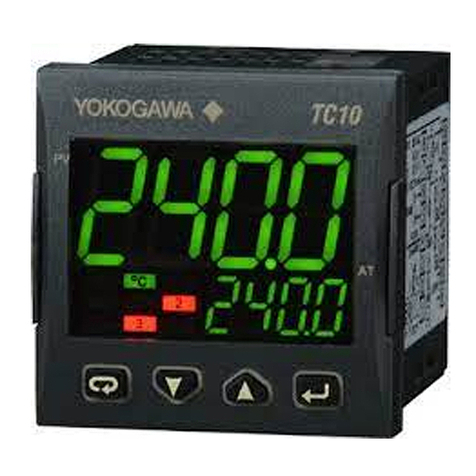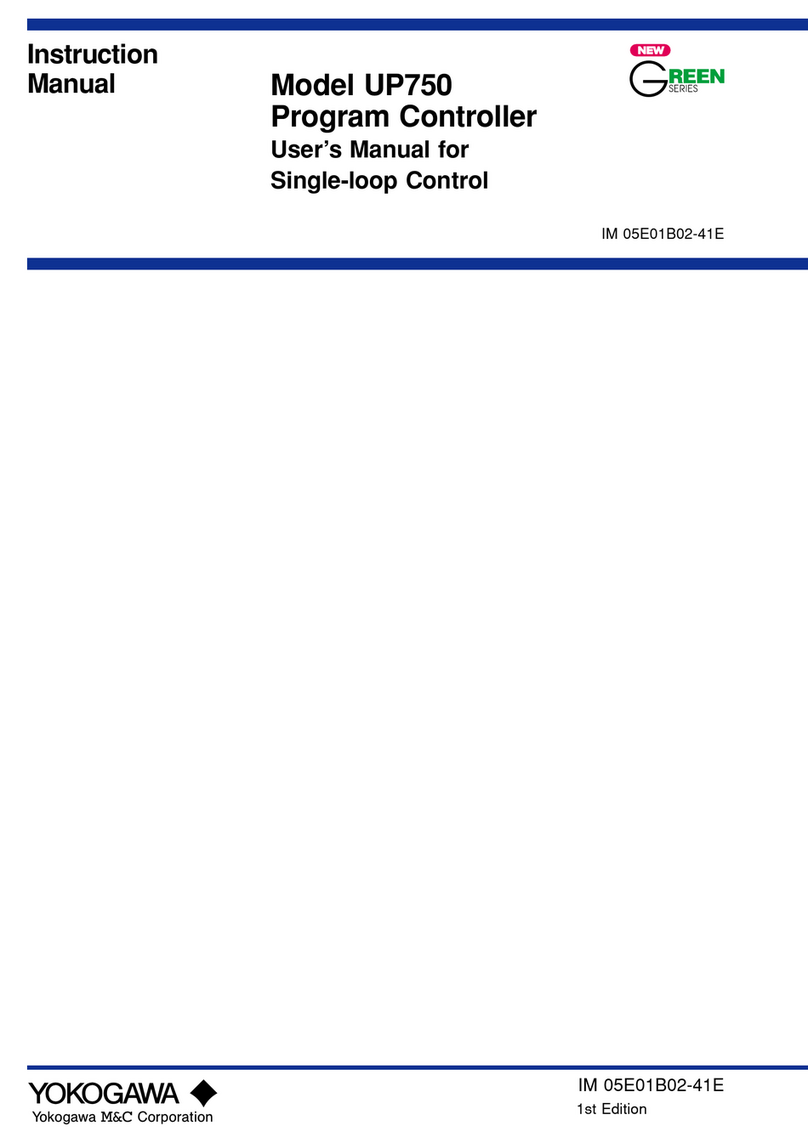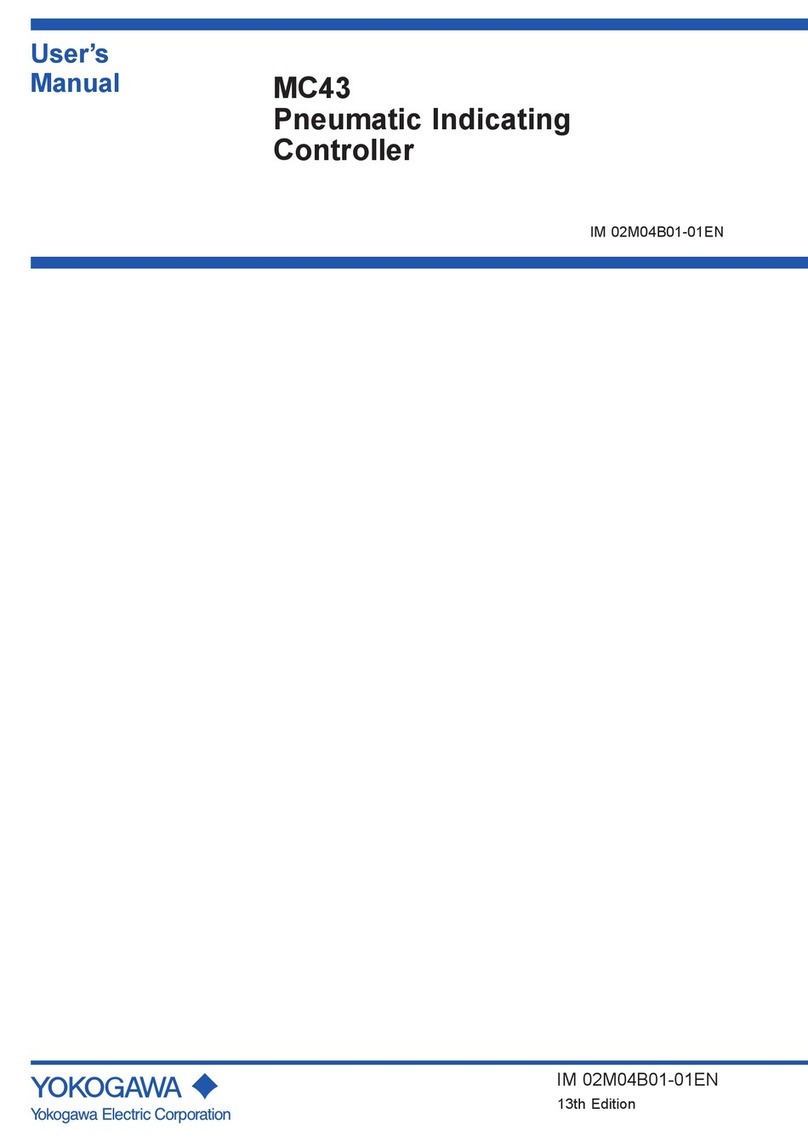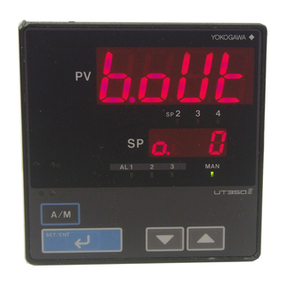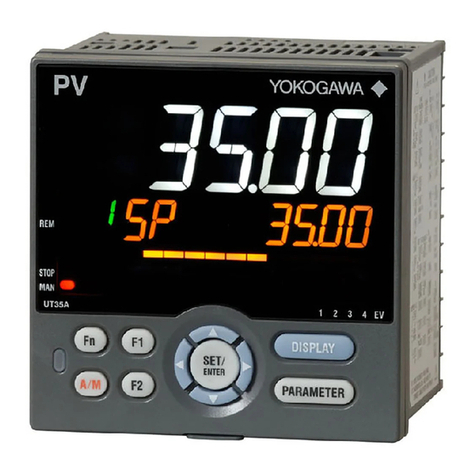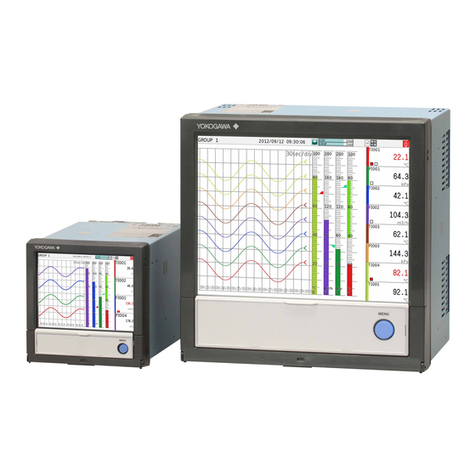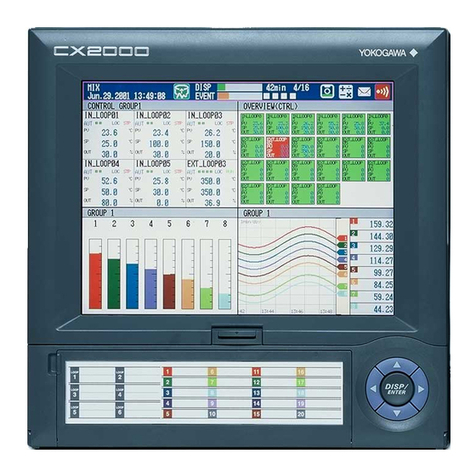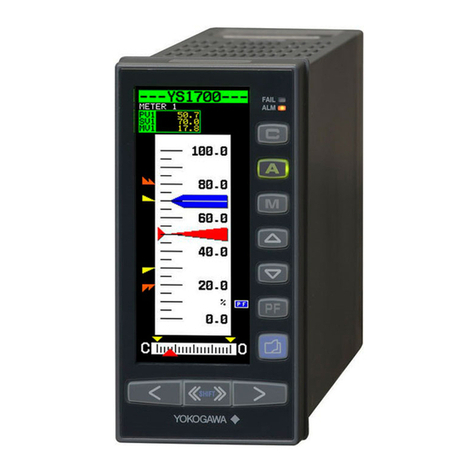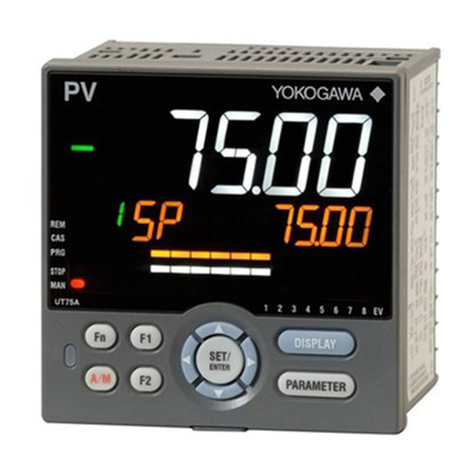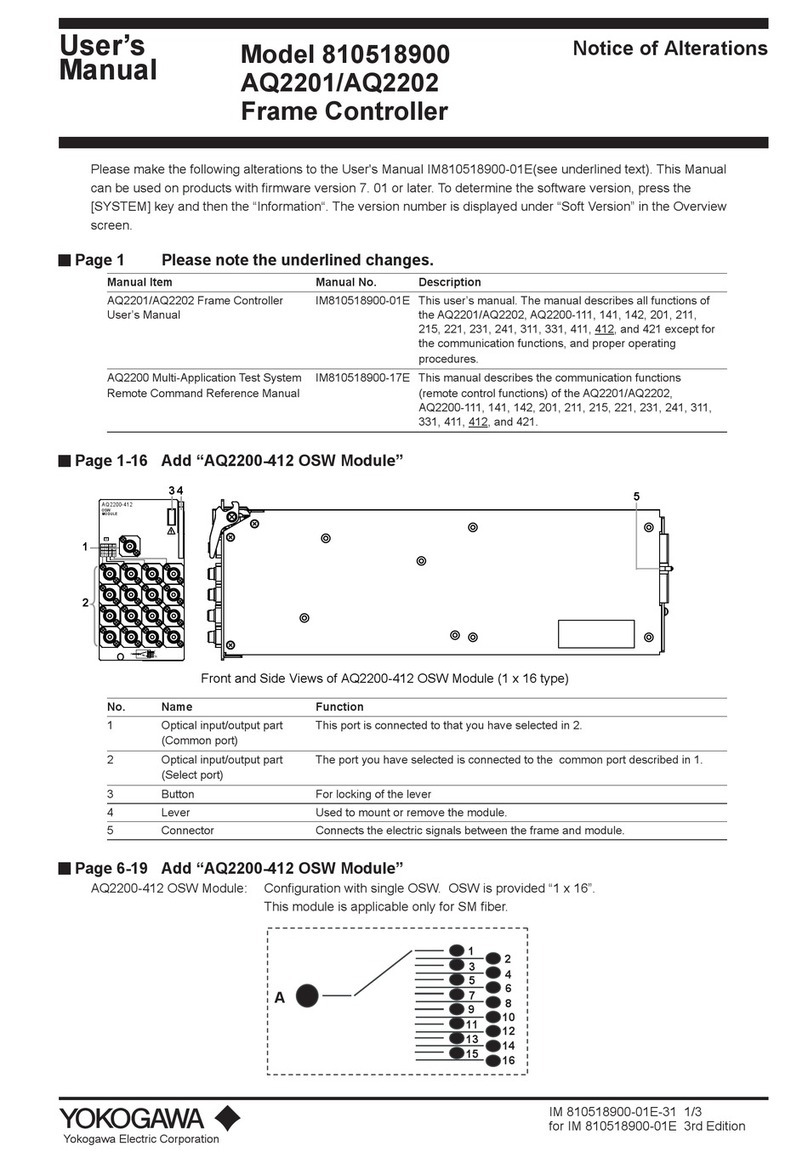OUT group
N Param. Description Range value or selection list elements Decimal
figure
9 o1.t
Out 1 type
NOTE: this parameter will be shown only when Out 1 is
present
0.20 = 0-20 mA
4.20 = 4-20 mA
0.10 = 0-10 Volt
2.10 = 2-10 Volt
0
10 o1F Out 1 function
nonE = Out not used
r.inP = Measure retransmission
r.Err = Error retransmission
r.SP = SP retransmission
r.SEr = Retransmission of a value coming from serial link
11 Ao1L Retransmission – initial scale value -1999 to Ao1H dP
12 Ao1H Retransmission – full scale value Ao1L to 9999 dP
13 o3F Out 3 function
Available: when Out 3 is present.
nonE = Out not used
AL = Alarm output
or.bo = Over-range and burn-out
P.FAL = Power failure
bo.PF = Over-range, burn-out and power Fail
14 o3AL Alarms linked up with Out 3
from 0 to 15
+1 = Alarm 1
+2 = Alarm 2
+4 = Burn-out
+8 = Overload of Out 4
0
15 o3Ac Out 3 action dir = Direct action
rEU = Reverse action
16 o4F Out 4 function
nonE = Out not used
AL = Alarm output
or.bo = Over-range and burn-out
P.FAL = Power failure
bo.PF = Burn-out and power Fail
On = Output ever ON (usable as auxiliary PWS for a transmitter).
17 o4AL Alarms linked up with Out 4
from 0 to 7
+1 = Alarm 1
+2 = Alarm 2
+4 = Burn-out
0
18 o4Ac Out 4 action dir = Direct action
rEU = Reverse action
AL1 Group
N Param. Description Range value or selection list elements Decimal
figure
19 AL1t Alarm 1 type
nonE = Alarm not used;
LoAb = Absolute low alarm;
HiAb = Absolute high alarm;
LHAo = Absolute band alarm with alarm indication out of the band;
LHAi = Absolute band alarm with alarm indication inside the band;
SE.br = Sensor break;
LodE = Deviation low alarm;
HidE = Deviation high alarm;
LHdo = Relative band alarm with alarm indication out of the band;
LHdi = Relative band alarm with alarm indication inside the band.
20 Ab1 Alarm 1 function
From 0 to 3
0 = no function
+1 = not active at power up
+2 = Relative alarm not active at set point change.
0
21 AL1L
- For High and low alarms, it is the low limit of the
AL1 threshold
- For band alarm, it is low alarm threshold
-1999 to AL1H (E.U.) dP
22 AL1H
- For High and low alarms, it is the high limit of the
AL1 threshold
- For band alarm, it is the high alarm threshold
AL1L to 9999 (E.U.) dP
23 AL1 Alarm 1 threshold AL1L to AL1H (E.U.) dP
24 HAL1 Alarm 1 hysteresis 1 to.9999 (E.U.) dP
25 AL1d Alarm 1 delay 0 (oFF) to 9999 (s) 0
AL2 Group
N Param. Description Range value or selection list elements Decimal
figure
26 AL2t Alarm 2 type
nonE = Alarm not used;
LoAb = Absolute low alarm;
HiAb = Absolute high alarm;
LHAo = Absolute band alarm with alarm indication out of the band;
LHAi = Absolute band alarm with alarm indication inside the band;
SE.br = Sensor break;
LodE = Deviation low alarm;
HidE = Deviation high alarm;
LHdo = Relative band alarm with alarm indication out of the band;
LHdi = Relative band alarm with alarm indication inside the band.
N Param. Description Range value or selection list elements Decimal
figure
27 Ab2 Alarm 2 function
0 = no function
+1 = not active at power up
+2 = Relative alarm not active at set point change.
0
28 AL2L
- For High and low alarms, it is the low limit of the
AL2 threshold
- For band alarm, it is low alarm threshold
-1999 to AL2H (E.U.) dP
29 AL2H
- For High and low alarms, it is the high limit of the
AL2 threshold
- For band alarm, it is the high alarm threshold
AL2L to 9999 (E.U.) dP
30 AL2 Alarm 2 threshold AL2L to AL2H (E.U.) dP
31 HAL2 Alarm 2 hysteresis 1 to 9999 (E.U.) dP
32 AL2d Alarm 2 delay 0 (oFF) to 9999 (s) 0
rEG group
N Param. Description Range value or selection list elements Decimal
figure
33 Hi.Lo Limit control type Hi = High limit.
Lo = Low limit.
34 r.md Restart mode
0 = On > limit output is ON in any case (the instrument start in shutdown
condition)
1 = oFF > limit output is OFF when, at power on, PV doesn’t exceed SP.
35 HyS Hysteresis of the control output From 0 to 100% of the input span dP
36 oP.SL Operative display selection 0 = PU.SP > PV and SP / SP only (lower display)
1 = SP > SP only (lower display)
37 SPLL Minimum set point value -1999 to SPHL ( E.U.) dP
38 SPHL Maximum set point value SPLL to 9999 (E.U.) dP
39 SP Set point SPLL to SPHL dP
40 dis The way to confirming operation but = by keyboard (button)
di = by digital input
41 tim Duration time when in exceeded (in
shutdown) 00.00 to 99.59 (HH.mm) 0
42 Hi Maximum measured value In Engineering Units dP
43 Lo Minimum measured value In Engineering Units dP
PAn Group
N Param. Description Range value or selection list elements Decimal
figure
44 PAS2 Password level 2 0 (oFF) to 200 0
45 PAS3 Password level 3 3 to 200 0
46 di.CL Display color
0 = Bargraph (the display color is used to show the Exceeded condition).
1 = fixed red display
2 = fixed green display
3 = fixed amber display
0
47 diS.t Display time-out 0 (OFF) to 99.59 (mm.ss) 2
SEr group
N Param. Description Range value or selection list elements Decimal
figure
48 Add Address 0 (oFF) to 254 0
49 bAud Baud rate
1200
2400
9600
19.2
38.4
CAL group
N Param. Description Range value or selection list elements Decimal
figure
50 A.L.P Adjust low Point -1999 to AH.P-10 (E.U.) dP
51 A.L.o Adjust low Offset -300 to 300 (E.U.) dP
52 A.H.P Adjust High Point A.L.P +10 to 9999 (E.U.) dP
53 A.H.o Adjust High Offset -300 to 300 (E.U.) dP
Param. Description Range value or selection list elements Dec.
point
SP Set point (shutdown set point) From SPLL to SPHL dP
AL1L - For high or low alarm, it is the low limit of AL1 threshold From -1999 to AL1H E.U. dP
- For band alarm, it is low alarm threshold
AL1H
- For high or low alarm, it is the high limit of AL1 threshold
From AL1L to 9999 dP
- For band alarm, it is high alarm threshold
AL1 Alarm 1 threshold From AL1L to AL1H dP
AL2L - For high or low alarm, it is the low limit of AL2 threshold From -1999 to AL2H E.U. dP
- For band alarm, it is low alarm threshold
AL2H - For high or low alarm, it is the high limit of AL2 threshold From AL2L to 9999 dP
- For band alarm, it is high alarm threshold
AL2 Alarm 2 threshold From AL2L to AL2H dP
HyS Hysteresis of the shutdown control (relay hysteresis for control output) From 0 to high limit of the measured input range selected (MIRS) dP
Fil Digital filter on the measured value From 0 (OFF) to 20.0 s 1
dS PV input bias From -100 to 100 % of the input span
